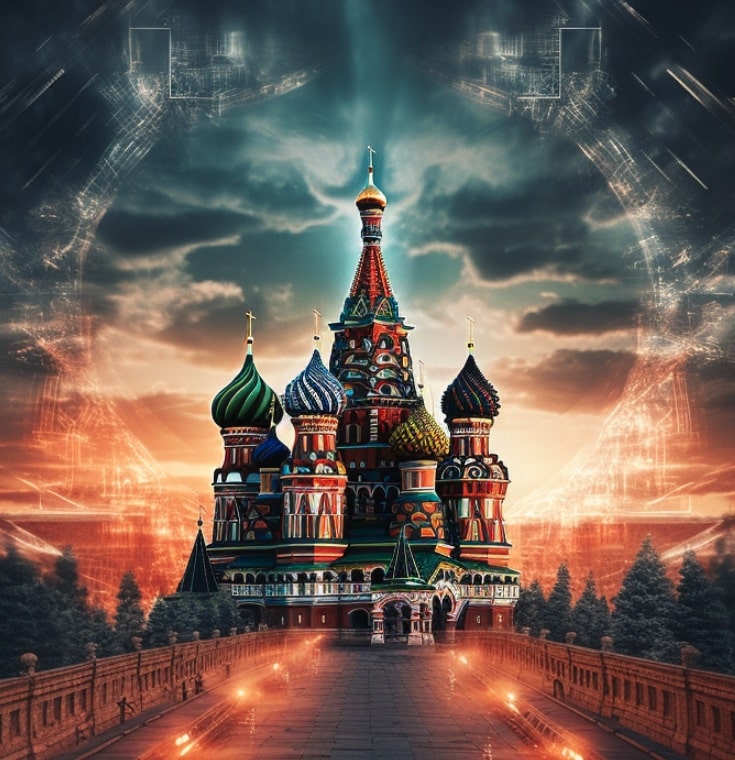A New Dawn Russia builds MSU-270 supercomputer for AI and HPC research.
Lomonosov Moscow State University (MSU) takes a monumental stride in the world of supercomputing with its newest innovation, the MSU-270. Boasting a groundbreaking computational power of 400 ‘AI’ PetaFLOPS, this machine sets the stage for advanced artificial intelligence (AI) projects and high-performance computing (HPC) applications. The supercomputer also holds great promise in training extensive AI models.
But what lies at the heart of this behemoth? Notably, the MSU-270 is powered by the “latest graphics accelerators,” though the university remains tight-lipped about their origins. This veiled mystery prompts the question: Where do these accelerators come from?
The Building Blocks of the MSU-270
“We have initiated the launch of this project,” remarked Viktor Sadovnichy, the esteemed head of MSU, during a presentation at the Faculty of Computational Mathematics and Cybernetics. “From this point forward, the MSU-270 supercomputer stands fully operational.”
This state-of-the-art supercomputer is believed to incorporate approximately 100 of the latest graphic accelerators, supplemented with innovative systems for energy, cooling, and communication. Aligning with MSU’s visionary goals for 2030, the machine’s development evokes an intriguing observation: while Russia isn’t particularly recognized for GPU innovations, it’s highly plausible that it incorporates compute GPUs from leading industry giants like AMD, Biren Technology, Intel, or Nvidia.
However, herein lies the rub: both AMD and Nvidia are bound by U.S. export regulations, preventing them from supplying their top-tier GPUs to nations like Russia and China. Historically, though, MSU’s supercomputing arsenal predominantly utilized Nvidia’s technology.
Distinguishing AI PetaFLOPS
While a performance of 400 PetaFLOPS is undeniably impressive, it’s essential to discern that these are specialized ‘AI’ PetaFLOPS, which could imply the FP16 data format. To put this into context, Russia’s pinnacle supercomputer demonstrates an Rmax performance nearing 21.5 FP64 PetaFLOPS, with an Rpeak nearing 29.5 FP64 PetaFLOPs. While MSU has kept the FP64 performance of the MSU-270 under wraps (undoubtedly much lower than the quoted 400 PetaFLOPS), it might very well be Russia’s most rapid machine.
Beyond Raw Power: The Impact of MSU-270
The MSU-270’s prowess extends beyond sheer computational strength. It’s poised to pioneer AI-driven tools, crafting sophisticated algorithms for vast data analysis and forging protective measures for AI services. Its applications are vast, catering to diverse disciplines like physics, chemistry, biology, and even the humanities.
Furthermore, in the grand scheme of academia, the MSU-270 is not merely a machine—it’s an institution.
“Our faculty is globally recognized for its AI specialist training program, ranking among the world’s best,” Igor Sokolov, the Faculty Dean, proudly stated. “Our students gain invaluable knowledge, empowering them to craft pioneering tools. The MSU-270’s primary objective is to augment and amplify this training.”
OpenAI vs. MSU-270: A Simple Breakdown
OpenAI:
- It’s a company that does a lot with artificial intelligence.
- They made GPT-3, a very big and smart AI model.
- OpenAI uses a lot of computer power to make and train their models. Imagine having thousands of regular computers working together—that’s the kind of power they use.
MSU-270:
- It’s a huge computer made by Lomonosov Moscow State University in Russia.
- It can do a lot of things at once, making it very powerful. They say it has 400 ‘AI’ PetaFLOPS, which is like saying it’s super, super fast, especially for AI tasks.
- But, they haven’t told everyone all the details about what’s inside it or how exactly it compares to other big computers.
Comparing the Two:
- OpenAI focuses on AI research. They want to make AI models that can talk and think like humans.
- MSU-270 is a big computer that can be used for many things, not just AI. It’s like a multi-tool.
- We know a lot about what OpenAI does because they share information. But, with MSU-270, we don’t have all the details.
In Simple Words: OpenAI is like a chef that specializes in making one type of dish but makes it really well. MSU-270 is like a big kitchen with lots of tools—you can make many dishes, but we’re not sure how good each dish is because we haven’t tasted all of them.
Soon, the MSU-270 will seamlessly integrate into Russia’s overarching network of scientific supercomputing centers, transcending its utility beyond just the university’s walls.
In conclusion, the MSU-270 doesn’t just represent a technological advancement—it embodies Russia’s aspirations, ambitions, and future in the global AI landscape. But, will it truly revolutionize the AI domain as we know it? Only time will tell.
